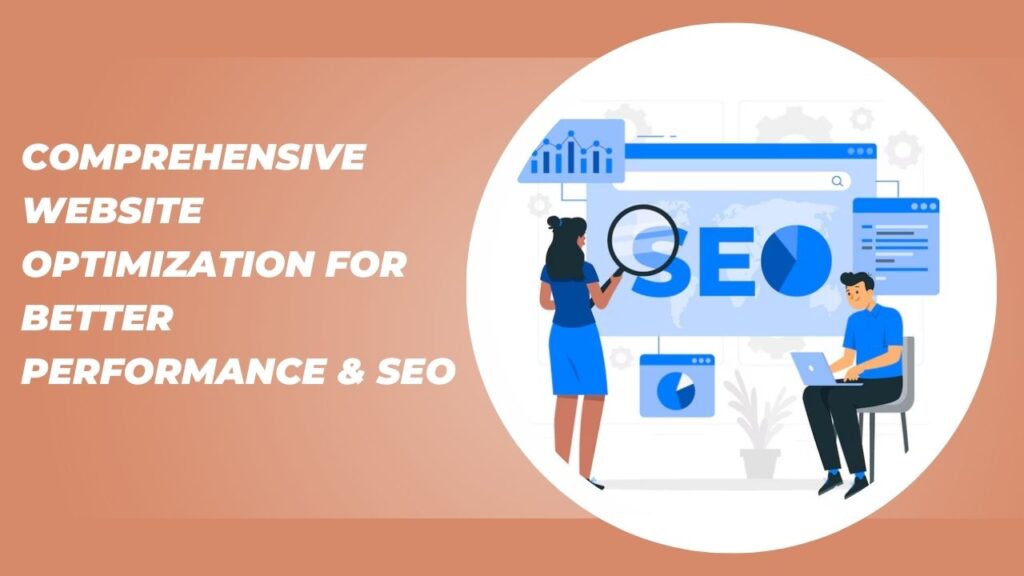In today’s digital world, a well-optimized website is crucial for achieving superior performance and search engine visibility. Comprehensive website optimization encompasses various strategies aimed at enhancing user experience, boosting search engine rankings, and ensuring seamless accessibility across devices. This guide delves into essential components of website optimization, providing actionable insights to help you create a robust online presence.
Table of Contents
Understanding Comprehensive Website Optimization
Comprehensive website optimization involves a holistic approach to improving all facets of a website, including technical infrastructure, on-page elements, and user engagement metrics. The primary objectives are to enhance site speed, ensure mobile responsiveness, secure the site, and provide valuable content to users.
Technical SEO: Building a Solid Foundation
Technical SEO lays the groundwork for a website’s performance and searchability. Key aspects include:
Website Speed and Performance
Page speed is a critical ranking factor and affects user experience. Optimizing page speed involves:
- Image Optimization: Compress images using tools to reduce file sizes without compromising quality.
- Code Minification: Remove unnecessary characters from HTML, CSS, and JavaScript files to streamline code.
- Browser Caching: Enable caching to store static files, reducing load times for returning visitors.
- Content Delivery Network (CDN): Utilize a CDN to distribute content across multiple servers, enhancing load times globally.
Mobile Responsiveness
With the majority of web traffic coming from mobile devices, ensuring your website is mobile-friendly is imperative. Responsive design allows your site to adapt seamlessly to various screen sizes, providing an optimal user experience.
Secure Sockets Layer (SSL) Implementation
Securing your website with HTTPS encrypts data transfer between the server and users, building trust and potentially improving search rankings. An SSL certificate is essential for this purpose.
Structured Data Markup
Implementing schema markup helps search engines understand your content better, enabling rich snippets in search results. This can enhance visibility and click-through rates.
On-Page SEO: Enhancing Content and Structure
On-page SEO focuses on optimizing individual web pages to rank higher and earn more relevant traffic. Key components include:
Title Tags and Meta Descriptions
Craft compelling and concise title tags and meta descriptions that incorporate primary keywords. These elements influence click-through rates and search engine understanding of page content.
Header Tags (H1, H2, H3, etc.)
Use header tags to structure content hierarchically, making it easier for readers and search engines to navigate your content.
Keyword Optimization
Integrate relevant keywords naturally throughout your content, including in headings, paragraphs, and image alt texts, to signal topic relevance to search engines.
Internal Linking
Establish a network of internal links to guide users to related content, improving site navigation and distributing page authority.
Image Optimization
Optimize images by compressing file sizes and adding descriptive alt text to improve load times and accessibility.
User Experience (UX): Prioritizing Engagement and Accessibility

A positive user experience encourages longer site visits and repeat traffic. Focus on:
Intuitive Navigation
Design a clear and straightforward navigation menu to help users find information quickly.
Readable Content
Use legible fonts, appropriate text sizes, and sufficient contrast to enhance readability.
Accessible Design
Ensure your website is accessible to users with disabilities by following best practices, such as providing alt text for images and using semantic HTML.
Monitoring and Continuous Improvement
Regularly assess your website’s performance using tools like Google Analytics and Google Search Console. Monitor metrics such as page load times, bounce rates, and keyword rankings to identify areas for improvement.
Conclusion
Comprehensive website optimization is an ongoing process that requires attention to technical details, content quality, and user engagement. By implementing the strategies outlined above, you can enhance your website’s performance, improve search engine rankings, and provide a superior experience for your visitors.
Frequently Asked Questions (FAQ)
Q1: What is comprehensive website optimization?
A1: Comprehensive website optimization refers to a holistic approach to improving all aspects of a website, including technical infrastructure, on-page elements, and user experience, to enhance performance and search engine visibility.
Q2: Why is website speed important for SEO?
A2: Website speed is crucial because faster-loading pages provide a better user experience, reduce bounce rates, and are favored by search engines, potentially leading to higher rankings.
Q3: How does mobile responsiveness affect my website?
A3: Mobile responsiveness ensures that your website displays correctly on various devices, improving user experience and aligning with search engines’ mobile-first indexing, which can positively impact rankings.
Q4: What is SSL, and why do I need it?
A4: SSL (Secure Sockets Layer) encrypts data transfer between your website and users, enhancing security and trust. Websites with SSL certificates use HTTPS, which is a ranking factor for search engines.
Q5: How does structured data markup benefit my website?
A5: Structured data markup helps search engines understand your content better, enabling rich snippets in search results, which can improve visibility and click-through rates.
Q6: What are title tags and meta descriptions?
A6: Title tags are HTML elements that specify the title of a web page, while meta descriptions provide brief summaries of page content. Both influence click-through rates and search engine understanding of your pages.



